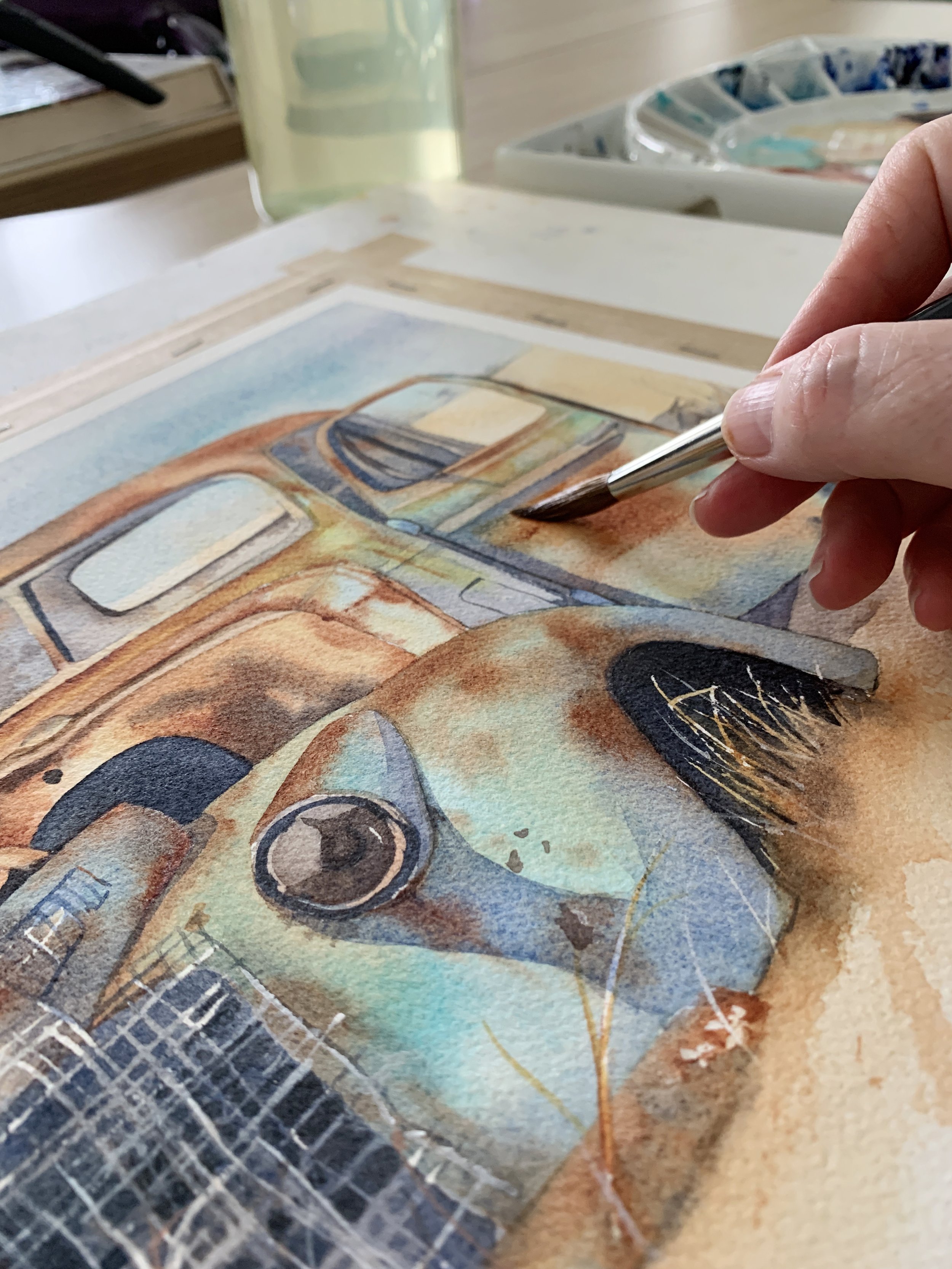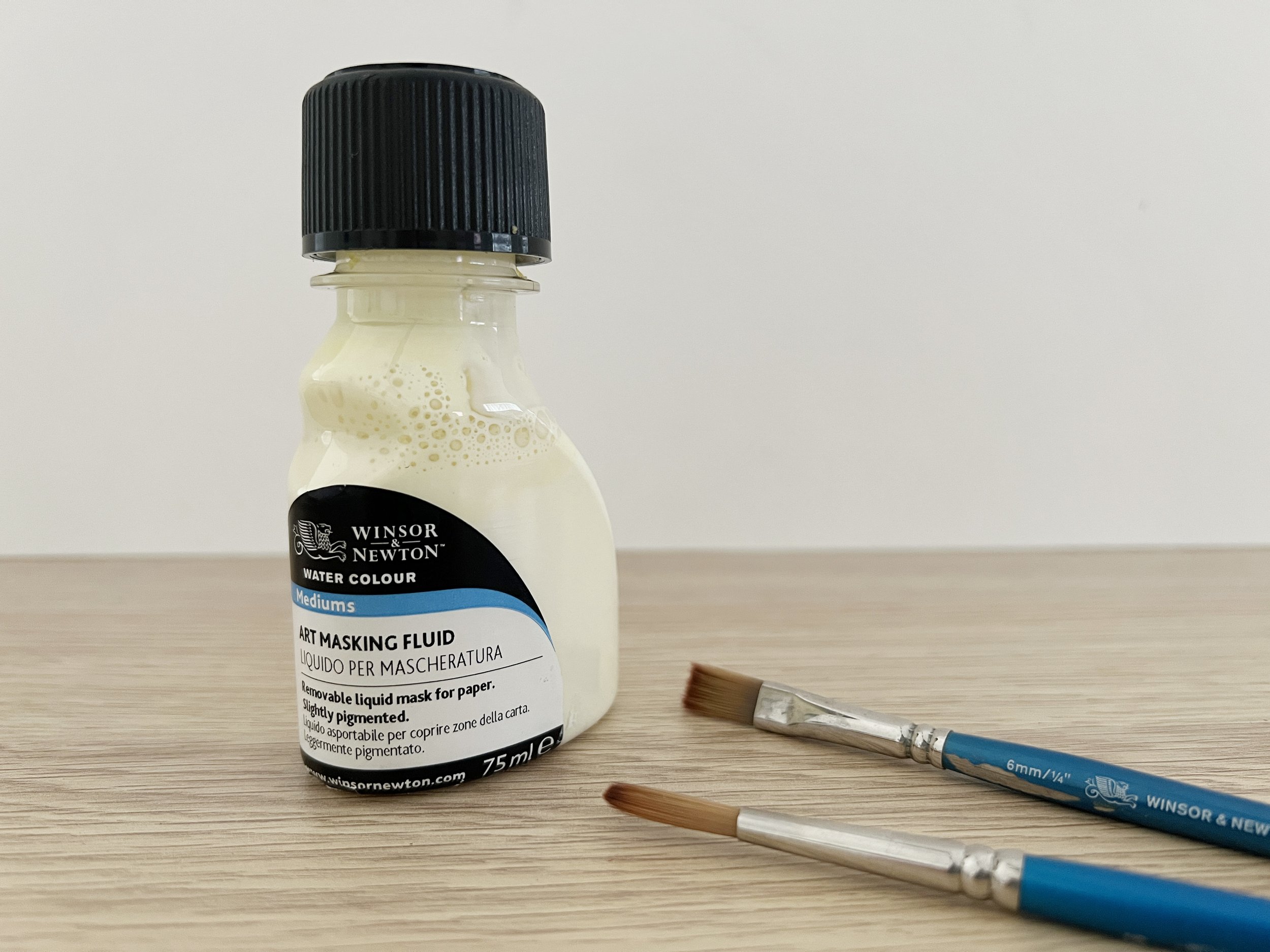Before you start painting, every artist’s journey begins with the first step: selecting your tools and getting familiar with all the materials you need. Watercolour paints come in pans and tubes, each with its unique charm. Watercolour brushes, in their myriad shapes and sizes, are your loyal companions, and watercolour paper—your canvas—awaits with its textures and weights. There is cold press paper, hot press paper, paper, that lies in between... Let's not forget the supporting cast: watercolour palette, masking fluid, and sponges.
Read MoreEmbarking on a daily doodling journey isn’t about producing gallery pieces daily. Making art is not the goal here. Rather, it's about embracing the process, the repetition, and the insights gained with every drop of paint. It's about becoming one with your tools and materials, understanding the nuances of water and pigment, and how they interact on the canvas of your paper.
Read MoreDive into the splashy, unpredictable world of watercolour with a word list that's more colourful than my palette after a day's work. Think of this not just as a list, but as your trusty sidekick in the art studio, ready to decode the mysterious language of watercolours. From the gravity-defying "wet on wet" technique to the rebellious "back runs" that refuse to stay put, these terms are the secret handshake of the watercolour society.
Read MoreImagine water as the dance partner in your watercolour tango. Like any good partner, water can lead you to create fluid, dynamic movements on the paper. However, if not in sync, it can step on your toes, causing washes to bleed uncontrollably or colours to become dull. Very little water will result in dry brush like strokes, whereas too much water will flood your paper and make the colour hard to handle.
Read MoreWorking as a full-time artist leaves me with hardly any time for other activities, which is why my rose garden has become a jungle of weeds 😬. The few roses that survive are struggling to find space to breathe among all the overgrowth. Despite this, my 'Heaven Scent' rose miraculously managed to produce this little gem.
I cut it free from the weeds that were smothering it and left it in a vase to open slightly before I painted it.
Read MoreSynthetic brushes are not only good for watercolour painting; they are an excellent choice for many artists. Their durability, versatility, and ethical production make them suitable for a wide range of watercolour techniques, from broad washes to fine details.
Whether you’re a beginner looking for a cost-effective way to start painting or a professional seeking reliable tools, synthetic brushes offer quality and performance that can meet—and even exceed—your painting needs.
Read MoreOne thing most watercolour artists try to avoid is making mud when they mix colours.
Muddy colours appear lifeless or lacking in vibrancy. To avoid making dull colours it's best to use transparent colours when you mix paint.
Opaque pigments, because they are heavier and denser, tend to become dull and lifeless when you mix with them, particularly when you mix two or more opaque pigments together. If you need to mix with an opaque pigment - pair it with a transparent pigment to avoid a thick and heavy mixture.
Read MoreBackgrounds in art fill the critical space between the subject and the frame, turning empty canvases into resonant scenes brimming with life. They define the positive (subject) and negative (space around the subject) spaces, adding layers of depth and context. A background can support the main subject with a contrasting or complementary backdrop or even steal the spotlight, as Vincent van Gogh’s “Starry Night” beautifully illustrates. They're not just settings; they're expressions, setting the mood, suggesting settings, and influencing the viewer's emotional response.
Read MoreDiving into the world of watercolor painting can be both exhilarating and a bit daunting for beginners. With its beautiful washes and vibrant hues, watercolor art offers a unique medium to express creativity. However, the thought of mastering this fluid form of painting might seem overwhelming at first.
Read MoreLet's face it, we're all busier than a set of watercolor brushes at a plein air festival. Finding time to paint can feel like trying to squeeze another color onto an already crowded palette. But here's the kicker: you don't need to carve out a massive chunk of your day. Setting a specific time for your art, be it early morning or late evening, creates a sacred ritual. It's like having a coffee date with your creativity, and trust me, your muse appreciates punctuality.
Read MoreUnstretched paper naturally buckles when water and wet paint are applied, as the paper's fibres expand, creating an uneven surface that presents challenges during painting. This buckling can result in unexpected streaks, blooms, and undesirable edges, ultimately compromising the intended effect of the artwork. As well as that, the buckled paper may dry unevenly, which not only effects the painting process but also the presentation of the finished painting. Techniques like wet-on-wet or gradients, which rely on precise control over the paper's moisture, become difficult to execute effectively when the paper is not properly flattened.
Read MoreBefore diving into specific colour substitutions, it's crucial to understand colour properties: hue, value, and saturation. These are universal, regardless of the brand. Hue refers to the colour itself, value to its lightness or darkness, and saturation to its intensity. When looking for a substitute, aim for a match in these three properties, and you'll be close to the original colour.
Read MoreSynthetic brushes are made from synthetic fibres such as nylon, Taklon, or a blend of synthetic materials. They are vegan and cruelty-free, appealing to those who prefer not to use brushes made from natural hair. They may not hold water as well as natural hair brushes but with advancements in brush technology, synthetic brushes now have improved water retention. They are generally more affordable than natural hair brushes, so if you are a beginner or you are on a budget, synthetic brushes are a good choice.
Read MoreIt's important to store your watercolour brushes well to maintain their shape, preserve the bristles, and extend their lifespan.
I used to store my brushes upright in containers but when we built my studio I included some narrow drawers to be built into the cabinetry.
I now store my brushes in the drawers. I bought some PVC multi purpose cupboard protector rolls and I cut them to fit inside the drawers. The liner stops the brushes from rolling around when I open and shut the drawers.
Read MoreBefore you start practicing there are several factors that can affect the outcome and quality of your brush strokes in watercolour painting.
Be aware of how much water you have mixed into your paint mixture. Thicker paint may result in more textured strokes, while thinner paint creates smoother, more translucent effects. When you are practicing brush strokes like those demonstrated in this blog post, you want the paint brush to glide over the paper so your paint mixture needs to be fluid and not too thick.
Read MoreUnderstanding the amount of water on your brush and its interplay with the paper is vital. Watercolour techniques like dry-on-dry, wet-on-dry, wet-on-wet, and dry-on-wet are not just techniques; they are the essence of watercolour painting. Each watercolour method allows for a different expression of water and pigment, and mastering these can elevate your art.
Many beginners may not use enough water on their paper. The brush should glide effortlessly over the paper for most techniques, except for dry brushing. Adjusting the water level in the paint mixture or in your brush, can help achieve the right flow.
Read MoreWhen it comes to applying masking fluid, your imagination is the limit. You can use synthetic brushes, ruling pens, silicone brushes, toothbrushes for splattering effects, sponges, bamboo quills and even fountain pens. Each tool brings its own unique magic to the paper.
Read MoreWhen I paint, I don't want to replicate the photo, I want to create an original piece of art.
There's a lot of information in my reference photo. The background is really busy and the Cockatoo has a lot of feather detail so I recognised the need to simplify to achieve a successful painting.
The photograph created the initial spark for the painting but it is merely a starting point to help convey the essence of the scene.
Read More
















